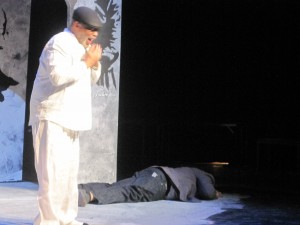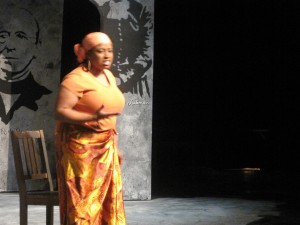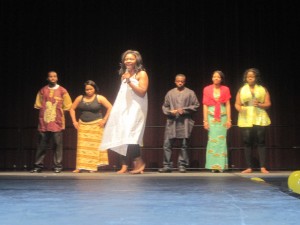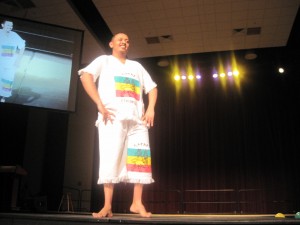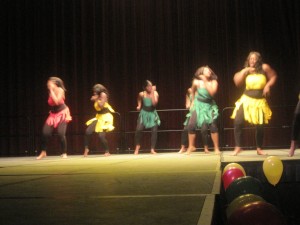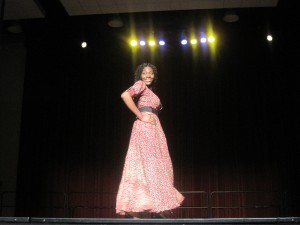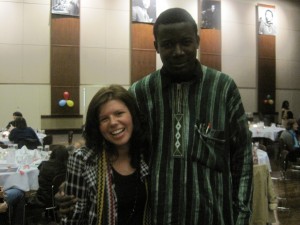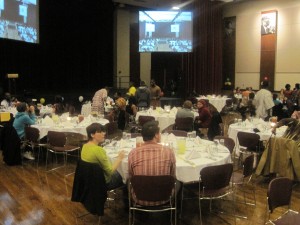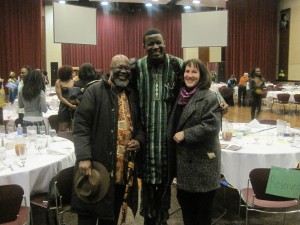Here is a guest post by my friend Akin, a professional photographer in the UK who tweets as Pixgremlin. His website is www.aworan.com. Asking him to write a guest-post, I had thought that I would get something along the lines of his interests in photography because – believe me – he takes some really good pictures. He didn’t. I get something along the lines of haggling – an old yet relevant cultural phenomenon among Nigerians and other Africans. By the time you finish this post, you will see why he’s not just a photographer, but a good writer too. Enjoy.
________________________________
Can you imagine haggling within the UK? Picture the scene, if you will: You walk into a shop that is selling a product that you want bad, and it so happens to be the last one in stock. You check your finances and realise that you have even less than the retail price to make any payments. “Damn! How do I get this item??” you begin to ponder. Then it dawns on you: being a native from a suppossedly ‘less economically developed nation’ (if that is the case), you feel you have certain transferrable skills that are applicable in acquiring goods and services, and that skill is the art of haggling.
So, there you are, holding the item and you make your way to the Payment Counter, with that determined look that you’ll be leaving the shop with said product in toll. The Cashier offers the obligatory smile and tallys up the cash register and repeats the amount on the tag, as is clearly labelled £750 excluding VAT. The transaction begins:
 You:“Ummmm.. wouldn’t you say that this item is a bit expensive??”
You:“Ummmm.. wouldn’t you say that this item is a bit expensive??”
Customer Service Assistant: (Trying to hurry you up since her shift ended 5 mins ago) “I guess so.. will you be paying by card?”
You: “Not really.. I think this price is a bit over the top. How about I pay £100?”
CSA:“Excuse me?”
You:“Ok, £100 is asking too much. What say I up it to £170, and that’s my final offer!”
CSA: (Clearly irate, but composing herself because The Customer is Always Right ) “Sir, all the items are of a fixed price that has been set by the company!”
You: “Ahh-ahh!! If I check the other shops, I’m sure that I can get a good deal!”
CSA: (What does she care what you do next?! With the kind of money she makes doing this job, it’s not worth doing the over time!!)“Sir, will you be purchasing the item or not??”
You: (leaning in closer to the counter, thus begining to worry the CSA) “Look, here’s the deal: I want to bargain a good deal, and I don’t plan to leave until I get what I want! I will pay £300 and that’s my last-LAST offer!”
With a line like that, you’ve only just set yourself up for the CSA to trigger the silent alarm, and before you know it her Line Manager has arrived with security.
Haggling is the subtle/dramatic/diplomatic art of negotiating for a product at a price which you can afford, since you feel and know that the original price is over inflated.
Haggling only works in the UK or some other ‘advanced nations’ within certain parametres, and its not always the case. That’s why I love going home to Nigeria, or any other country that appreciates the concept of haggling. Tried bargaining in Nigeria? It’s a rush. It help’s if you can speak or know some of the dialect or better still, your mannerism doesn’t reflect that of a tourist, but of veteran who travels alot and is not a sucker.
Picture the Scene (again!), only this time your in a busy Lagos market, where if you’re not careful, you could enter and may never come out again. You see some knick knacks that you’d like to get, being a tourist, and you negotiate with the seller, and you’re going to do so speaking pidgin:
You: “Oya, how much na ya ting?”
Vendor: “Oga, for you, I go give you good price! I dey sell am for ₦700
You: (Laughing sarcastically, but for added effect?) “₦700? Wetin do you? You sabi buy am for ₦700 self?”
Vendor: (Now has a look of distraught, in order to win sympathy for him) ” Ahh, oga. E no be like dat. Ok, I go price am for ₦480!”
You: Heh-heh!! You sef! Which kin discount be dat?” (You then make a ‘move’ to leave his shop.)
Vendor: “Ok, Oga. How much you wan buy am for?”
You: (now really trying your luck) “200″
Vendor:(Giving you a look that can’t believe you have the audacity to name such a price!) “Oga, you self, you make me laugh!” (He then makes a move to return the product back on the shelf)
You: “Why you dey look vex? Ok, I go pay ₦250, and dat be my last offer!”
Vendor: “Oga, I get pikin wey dey for my village. How I fit sell for dat kin price? I no go make profit?!?”
You: (As if you’ve never heard that line before, considering you invented it!) “Ol’ boy, which one you speak? I go buy am for ₦250 or wetin?”
Vendor: (Pauses for effect, as if weighing the pros & Cons of his profit dip ) “Ok, bring 300.”
You: “Ok, I go give you 300. Ahh-ahh!! Why you dey frown? “
It was also an experience and a half to haggle while I was India. Whenever the missus wanted a discount on a product, she didnt even bother talking to the seller. She would just ask me to step and negotiate the price. The shop owner would think that I would haggle like a European visitor. Hah!! I’m a Nigerian. Suffice to say, my haggling skills have now been revealed to the missus, and shopping will never be the same again!
Now, the art of haggling may not be applicable in most instances in these countries. It’s all a question of who’s going to blink first.
WARNING & DISCLAIMER: Haggling is not for the shy. You have to be aggresive, and most importantly, not to be a sore loser. The art of haggling may not be applicable in most instances in these countries. It’s all a question of who’s going to blink first. Have fun but don’t get carried away. I wonder if I can haggle with National rail when i renew my travel card at the end of this month? Hah!!
______________________________
Thank you Akin for this entertaining piece.
A list of previous guestposts is here.



